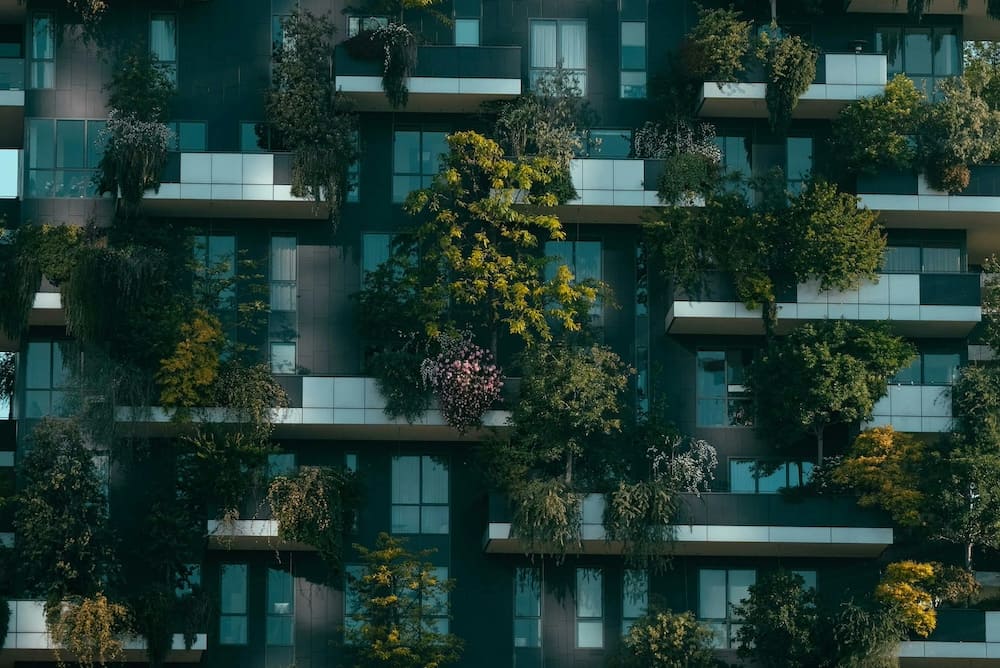Sustainability in real estate is becoming increasingly important as both developers and buyers prioritize environmental responsibility and energy efficiency. Here are key aspects and trends related to sustainability in real estate:
1. Green Building Standards and Certifications
LEED Certification
- Leadership in Energy and Environmental Design (LEED): A widely recognized green building certification that promotes sustainable building practices across several criteria, including energy use, water efficiency, and indoor environmental quality.
BREEAM
- Building Research Establishment Environmental Assessment Method (BREEAM): Another globally recognized certification that assesses the sustainability of buildings based on various performance standards.
2. Energy Efficiency
Smart Homes and Automation
- Smart Thermostats and Lighting: Devices like smart thermostats, automated lighting systems, and energy-efficient appliances help reduce energy consumption.
- Energy Management Systems: Advanced systems that monitor and optimize energy use in buildings, improving efficiency and reducing costs.
Insulation and Windows
- High-Performance Insulation: Improved insulation materials that reduce heating and cooling needs.
- Energy-Efficient Windows: Double or triple-glazed windows that provide better insulation and reduce energy loss.
3. Renewable Energy Integration
Solar Panels
- Rooftop Solar Panels: Installation of photovoltaic panels to generate electricity, reducing reliance on grid power.
- Solar Water Heaters: Systems that use solar energy to heat water, further reducing energy consumption.
Wind and Geothermal Energy
- Wind Turbines: In suitable locations, small wind turbines can provide supplemental energy.
- Geothermal Heating and Cooling: Systems that use the stable temperatures underground to heat and cool buildings.
4. Water Conservation
Low-Flow Fixtures
- Low-Flow Toilets and Faucets: Fixtures designed to reduce water usage without compromising performance.
Rainwater Harvesting
- Rainwater Collection Systems: Systems that collect and store rainwater for use in irrigation, flushing toilets, and other non-potable uses.
Greywater Recycling
- Greywater Systems: Systems that recycle water from sinks, showers, and washing machines for use in landscaping and other non-potable applications.
5. Sustainable Materials
Recycled and Locally Sourced Materials
- Recycled Building Materials: Using materials that have been recycled or repurposed to reduce waste.
- Locally Sourced Materials: Reducing transportation emissions and supporting local economies by using materials sourced nearby.
Sustainable Wood and Alternatives
- Certified Sustainable Wood: Using wood products from forests certified for sustainable management.
- Alternatives to Traditional Materials: Using materials like bamboo, which grows quickly and is highly renewable, as an alternative to traditional timber.
6. Indoor Environmental Quality
Ventilation and Air Quality
- Improved Ventilation Systems: Ensuring good air exchange rates to maintain indoor air quality.
- Non-Toxic Building Materials: Using materials that do not off-gas harmful chemicals.
Natural Lighting
- Daylighting: Designing buildings to maximize natural light, reducing the need for artificial lighting and improving occupant well-being.
7. Sustainable Landscaping
Native Plantings
- Drought-Resistant and Native Plants: Landscaping with plants that require less water and are adapted to the local climate.
Green Roofs and Walls
- Green Roofs: Roofs covered with vegetation that provide insulation, reduce heat island effect, and manage stormwater.
- Living Walls: Vertical gardens that improve air quality and provide insulation.
8. Community and Urban Planning
Walkability and Public Transport
- Mixed-Use Developments: Combining residential, commercial, and recreational spaces to reduce the need for long commutes.
- Public Transportation Access: Designing communities with easy access to public transportation to reduce reliance on cars.
Sustainable Infrastructure
- Stormwater Management: Systems designed to manage and reuse stormwater to reduce runoff and flooding.
- Electric Vehicle Charging Stations: Providing infrastructure for electric vehicles to support sustainable transportation options.
9. Policy and Incentives
Government Incentives
- Tax Credits and Rebates: Financial incentives for homeowners and developers to invest in sustainable technologies and practices.
- Regulations and Standards: Policies that mandate or encourage sustainable building practices.
10. Economic and Social Sustainability
Affordable Housing
- Sustainable Affordable Housing: Developing energy-efficient and sustainable affordable housing to reduce living costs for low-income families.
Community Engagement
- Inclusive Development: Engaging with communities to ensure that developments meet their needs and contribute to social well-being.
Summary
Sustainability in real estate encompasses a wide range of practices and technologies aimed at reducing environmental impact, improving energy efficiency, and promoting healthier living environments. By integrating these elements, real estate professionals can create buildings and communities that are not only environmentally friendly but also economically viable and socially beneficial.
